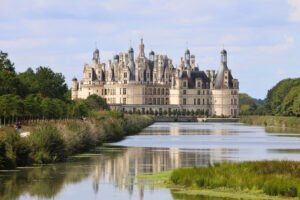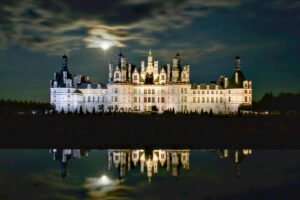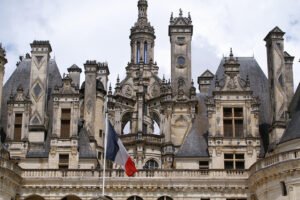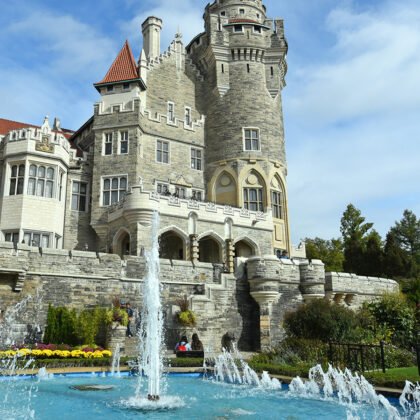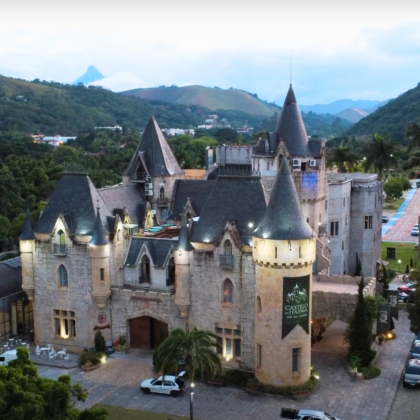Even if you’ve seen pictures, nothing quite prepares you for your first glimpse of Chambord. The towers and turrets seem to float above the Loire Valley mist, almost like something out of a storybook. Visitors wander through grand staircases and echoing halls, catching hints of the castle’s royal past at every turn. Chambord isn’t just impressive—it’s a little bit surreal, and impossible to forget.
Quick Facts
📍 Location: Loire Valley, France
🏗️ Construction Period: 1519 – 1547
🏰 Architectural Style: French Renaissance, with medieval and Italian influences
🎭 Famous For: Legendary double-helix staircase, dramatic rooftop, vast walled park
👑 Notable Figures: King Francis I, King Louis XIV
🏆 UNESCO Status: Yes, part of the Loire Valley World Heritage Site
🌐 Official Website: https://www.chambord.org/
Map
Historical Context
Of all the châteaux in France, Chambord stands apart—part royal playground, part architectural wonder. Built for King Francis I in the early 1500s, it was never meant to be a cozy home. Instead, Chambord was a bold statement, a place to impress visiting guests and show off the king’s taste for the spectacular. The double-helix staircase at the center still sparks debate about whether Leonardo da Vinci helped design it. Over the centuries, the château has survived revolution, abandonment, and two world wars, each chapter adding to its mysterious charm. Even now, walking its echoing halls and winding up to the elaborate rooftops, it’s easy to get swept up in thoughts of feasts, royal hunts, and the dreams of a king who wanted to leave his mark. Chambord isn’t just a building—it’s an ongoing story.
Gallery
Visiting Information
🗓️ Best Time to Visit: May, June, September, and early October
🗺️ Location Perks: Over 5,000 hectares of forest and fields—perfect for peaceful walks, cycling, or a picnic.
⏳ Estimated Visit Duration: Plan to spend 2–3 hours exploring the castle, its sweeping double-helix staircase, and the vast parklands that surround it.
💡 Visiting tips: Don’t skip the rooftop terraces—they’re the best spot for unique photos and a breath of fresh air.
Related Articles
- Château de Chambord Travel Guide: Explore France’s Fairytale Castle,
- 10 Unforgettable Castles to Visit in France Today,
- Exploring the Loire Valley castles: France’s Château Country,
- 25 Best Castles to Visit in Europe: Iconic & Hidden Gems,
- The 25 Most Famous Castles in the World: Iconic Fortresses You Must See,
- The Ultimate Winter Castle Guide: Magical Castles to Visit This Holiday Season & in the New Year

